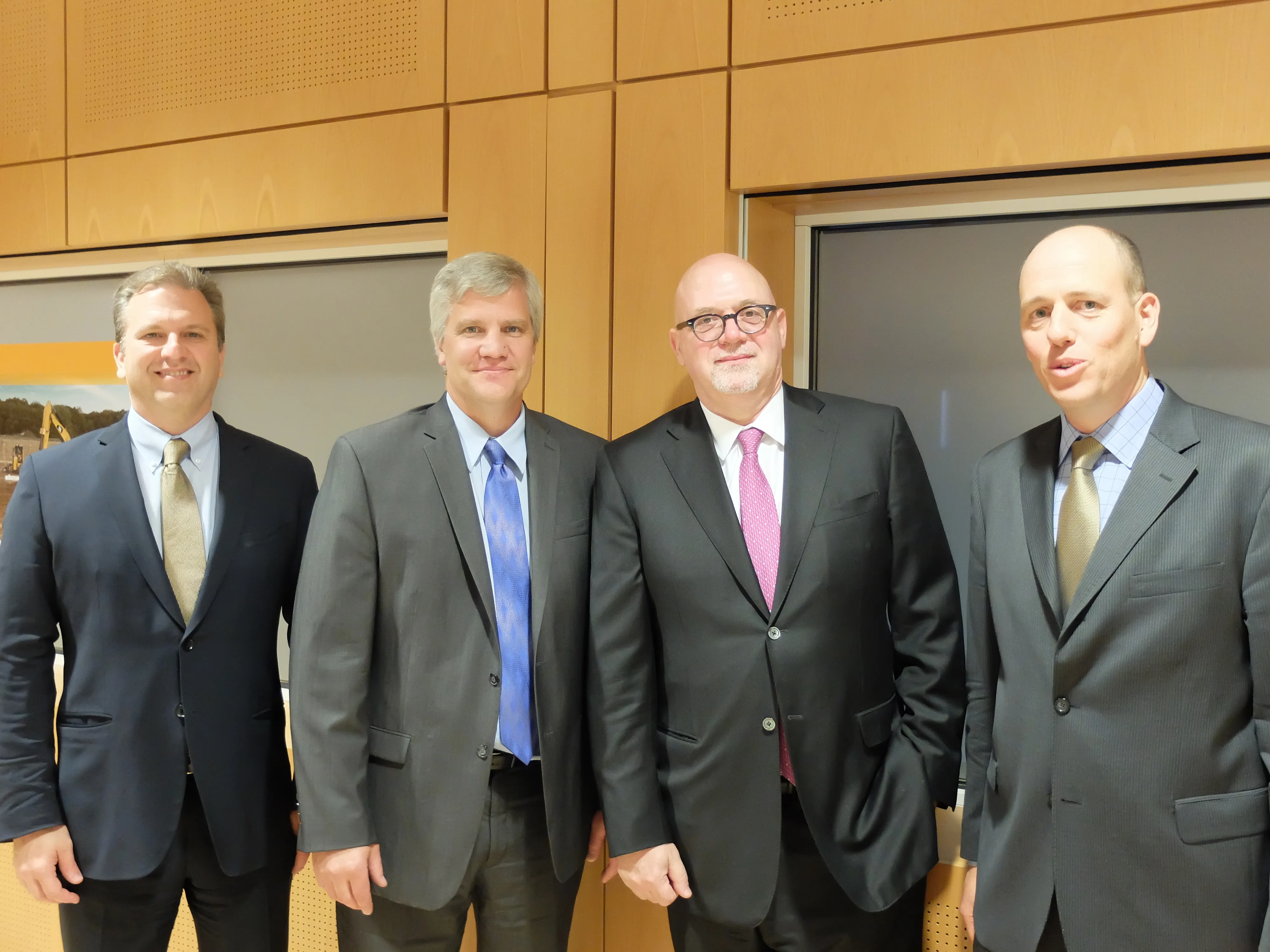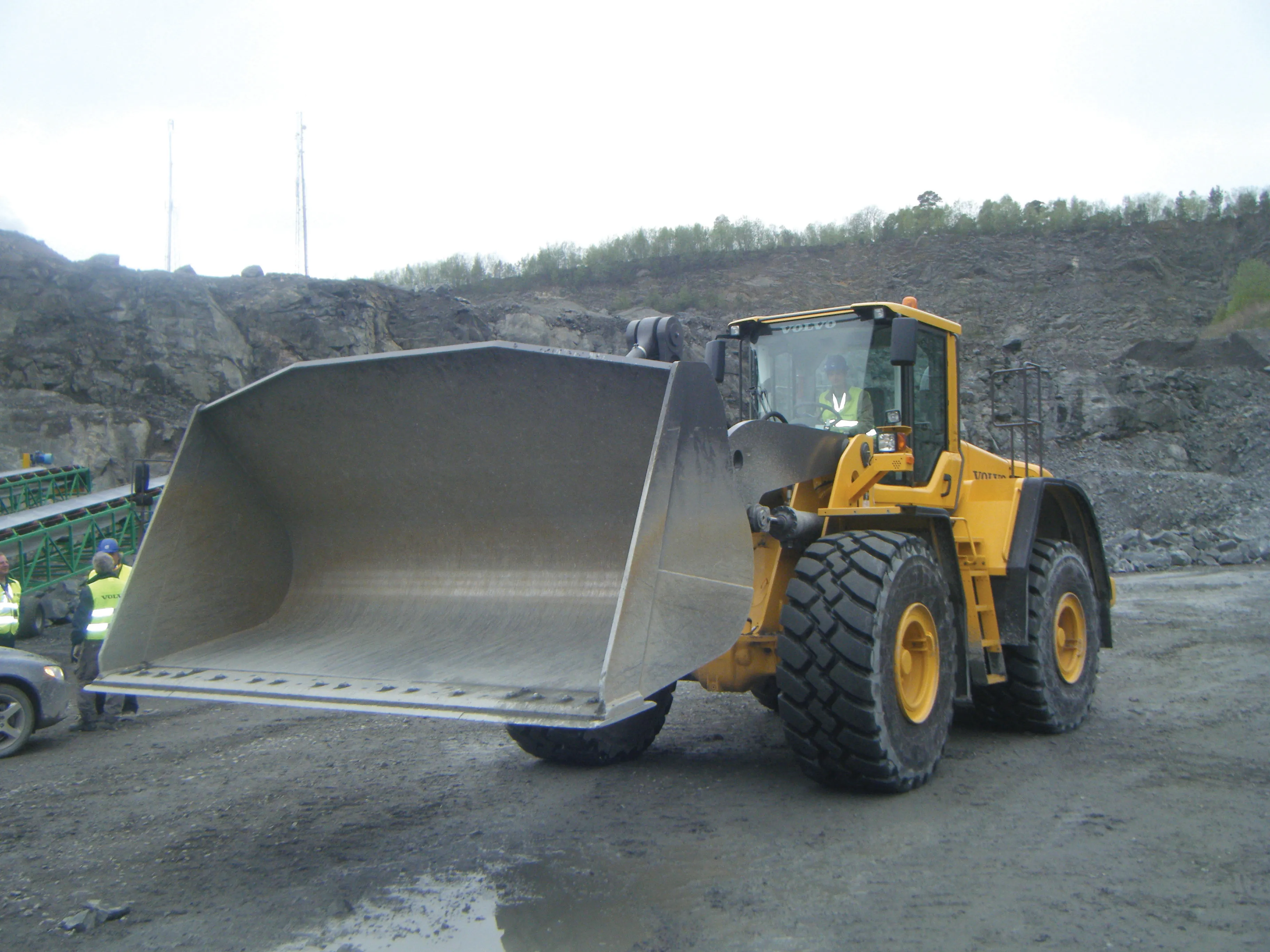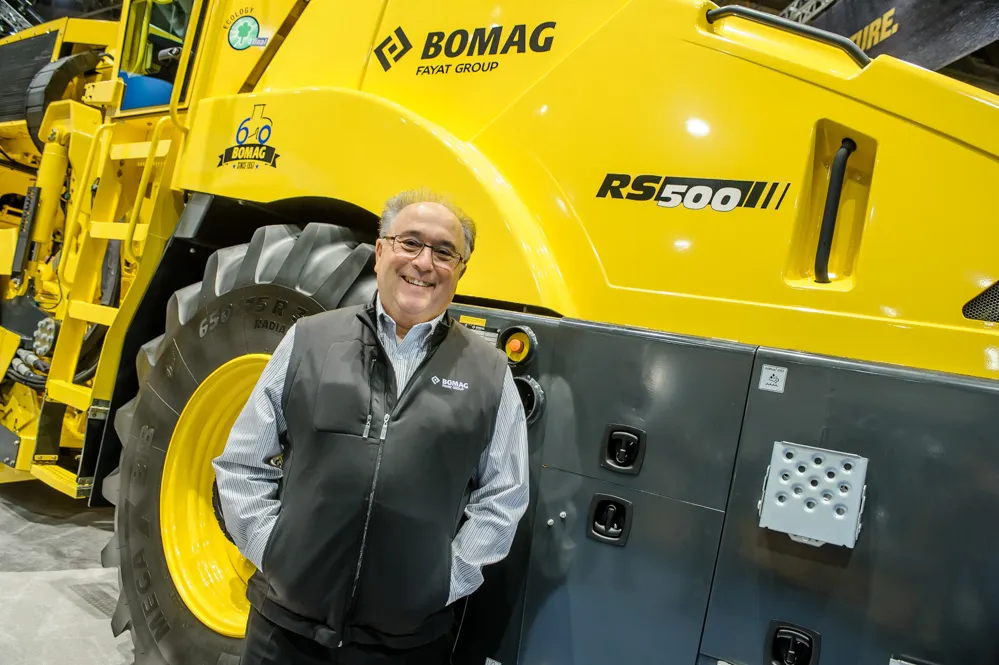
Fuel efficiency and powertrain alternatives are crucial for the future of construction, while the issue of emissions will remain a priority for some time to come – that was the message from
Senior executives from the company spoke with journalists, discussing key future technology developments and trends for the firm. Paolo Fellin is VP Global Construction & Infrastructure, while Ken Hoefling is VP for Building Construction Products. Karl Weiss is VP Earthmoving Division, while Phil Kelliher is VP Distribution Services Division.
Caterpillar has invested a great deal in research and development to reduce emissions and also develop alternative powertrains, issues that figured prominently in the discussions. Weiss said, “We have an electric drive dozer but it is propelled by diesel. We don’t have at this point a full electric drive machine. I think for underground equipment that is the future but we don’t have the battery power we’d need as yet. We continue to push the envelope but it’s not there yet.”
Fellin said that when Tier 4 was discussed, engineers said it would increase fuel consumption and that in fact, the latest engines deliver fuel savings. He added, “We’ve taken a step now and we’ll take major steps in the future.”
Hybrid technologies provide a path for the future and Weiss said, “We will add more models to our XE line. Going forward we’re looking at electric and hydraulic hybrid technology as well as CVT drives. You will see for some machines electric or hydraulic solutions.” He explained that there will be different solutions for different product categories and that with regard to excavators, “…we strongly feel the hydraulic hybrid is a more cost effective way to do it”.
Fuel consumption is a major cost factor for customers, accounting for some 30% of the running cost of a machine. Fellin added, “At the end of the day, everyone wants to know how much fuel they’re saving. That’s what counts.” He added that the data produced by the latest machines is also of benefit as firms can track operation and use very closely. “The VisionLink allows us to do that. Customers can take information from any machine in the fleet. The connectivity of the machines on the jobsite is a key.”
Weiss added, “What’s happening now is that our customers are coming to us and saying, ‘How do you help us make more money?’ It’s not just about saving money.”
Reducing engine emissions has been a massive focus for Caterpillar as well as its many rivals. The recent scandal surrounding VW and exhaust emissions reinforced the importance of this area for Caterpillar. Weiss said, “We have used what happened within VW as a strong internal message.” He explained that because VW is a strong brand and a strong company, it was a wake-up call to review internal processes and ensure that Caterpillar would not the same mistake, “That was the message from the top down at Caterpillar.”
He continued, “What’s different from on-highway is that you don’t bring your wheeled loader to a testing station and run the machine. You have safeguards within the supply chain and there is spot testing. We have a close relationship with the EPA and it audits us on a regular basis.” He added that the firm audits itself internally as well as being covered by the EPA and said, “We do it very openly.”
Machine autonomy is an important future technology and an area where Caterpillar has been a leading player for some time. The firm’s autonomous mining machines are becoming established, with a potential for this technology in quarrying and construction in the future. Weiss said, “You could have an autonomous worksite but you need the building blocks to get there.”
Kelliher said, “It took us about five years to go from the launch to full commercialisation. I predict that in five years we could take autonomous machines from the large mining environment down to quarries.” And he added that the firm has active autonomous machine technologies, not just for mine haul trucks or underground loaders, but also for large dozers and blasthole drills, while truck loading with large rope shovels could also be automated in the future.
Weiss said, “On a typical construction site, it’s not as predictable as a mine site. If it’s a large construction site we see more near term possibility of having autonomous machines.” But he explained that tasks involving more human interaction such as highway widening jobs are more complex and are less suited. “The complexity of a construction site is that you have several phases. If you’re moving material from here to there the dozer could work all day long without an operator. You could have multiple dozers and soil compactors.”
The proliferation of gaming systems has also been a driver in developing new control systems for machines. Hoefling said that because the younger, less experienced operators are more familiar with modern technology, they even have more experienced operators asking them how to use these new systems. The development process is involved and Weiss said, “We’ll show a product multiple times to a customer to get real time customer input in new technology.”
In terms of business development, Caterpillar is keen to expand its market share globally and by meeting its customer needs. Kelliher said, “If you look at our market share in North America, we continue to grow. One of the things we’re working on is networking the information between Caterpillar and the dealer.”
Hoefling said, “Our strategy is very simple. We have to be the best option for customers.” The application range is very diverse for smaller machines.
“But it’s hard to build a machine that works across all those applications.
One of the strengths we will always have is with our dealers. Everyone’s got great products but they don’t have our dealer network. The European rental market is very challenging. Now we have the ability to build the best machine to do the job at the lowest cost to run.”
US demand for compact machines is changing, with a growth in the numbers of mini excavators being sold for example. Sales of skid steer loaders might also be eroded in time by a growth in demand for compact wheeled loaders. Hoefling joked, “I don’t care if the customer buys a compact wheeled loader or a skid steer, as long as they buy a Cat.”









